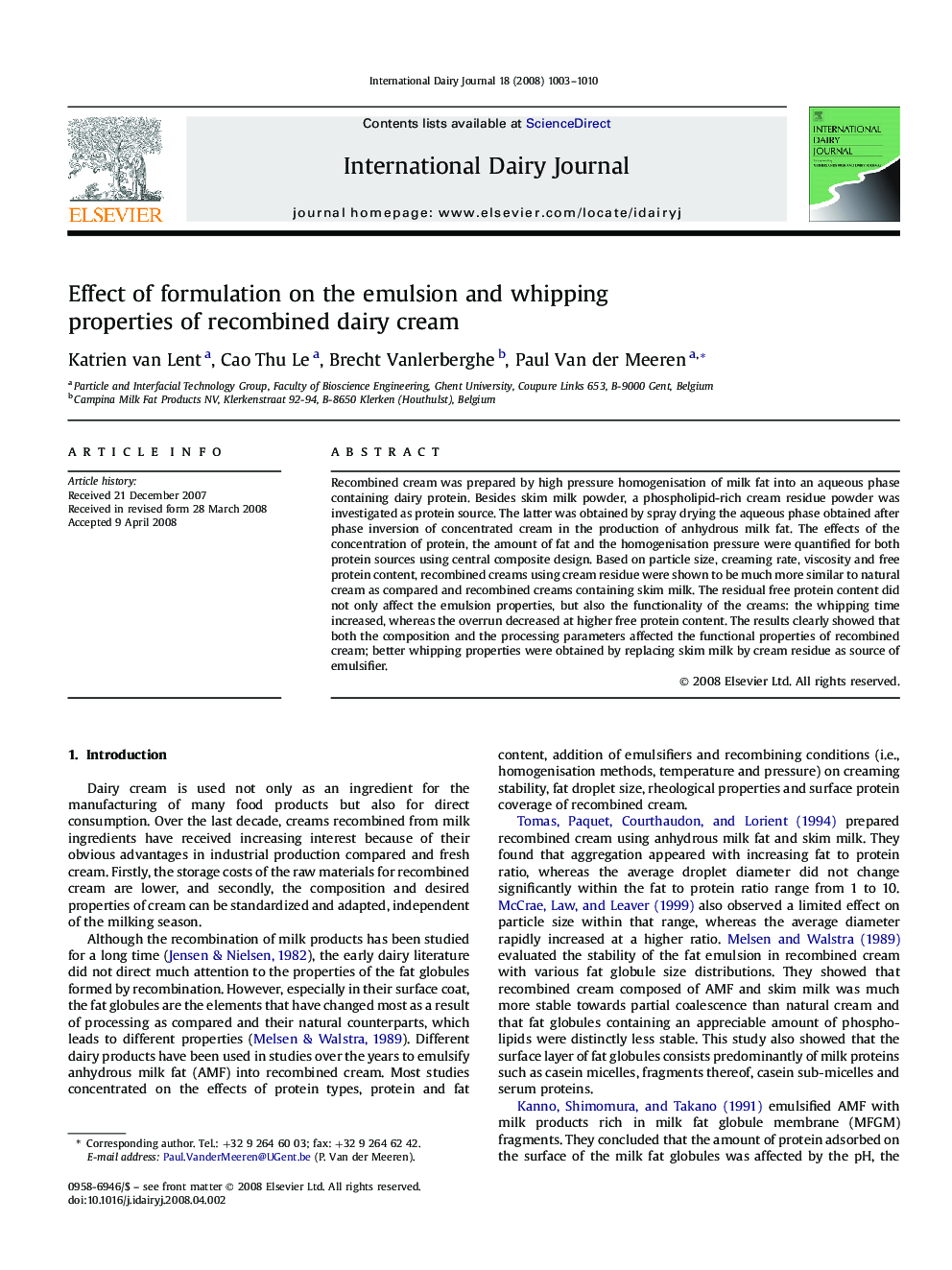| Article ID | Journal | Published Year | Pages | File Type |
|---|---|---|---|---|
| 2435396 | International Dairy Journal | 2008 | 8 Pages |
Recombined cream was prepared by high pressure homogenisation of milk fat into an aqueous phase containing dairy protein. Besides skim milk powder, a phospholipid-rich cream residue powder was investigated as protein source. The latter was obtained by spray drying the aqueous phase obtained after phase inversion of concentrated cream in the production of anhydrous milk fat. The effects of the concentration of protein, the amount of fat and the homogenisation pressure were quantified for both protein sources using central composite design. Based on particle size, creaming rate, viscosity and free protein content, recombined creams using cream residue were shown to be much more similar to natural cream as compared and recombined creams containing skim milk. The residual free protein content did not only affect the emulsion properties, but also the functionality of the creams: the whipping time increased, whereas the overrun decreased at higher free protein content. The results clearly showed that both the composition and the processing parameters affected the functional properties of recombined cream; better whipping properties were obtained by replacing skim milk by cream residue as source of emulsifier.
